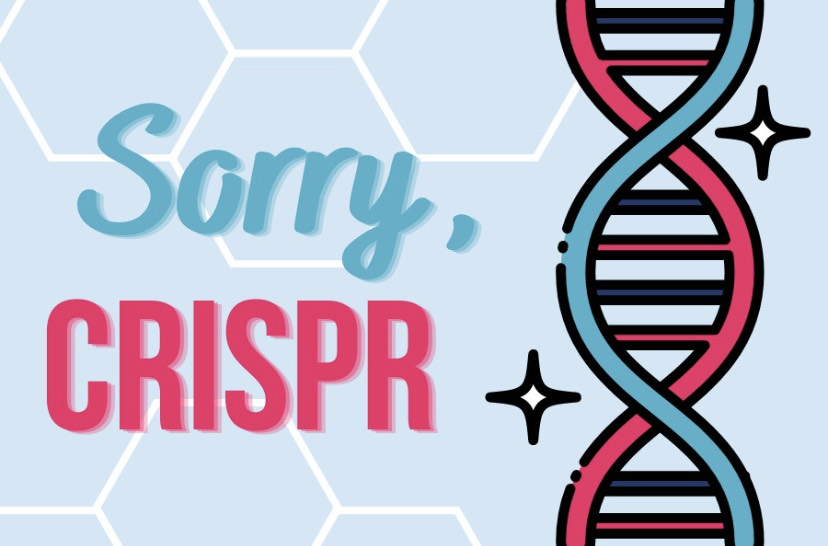Sorry, CRISPR, You’ve Become Obsolete
Gene editing, specifically CRISPR technology, has captivated the minds of scientists globally. CRISPR has been utilized to combat illnesses and to develop biological advancements. Cancer, HIV, and muscular dystrophy are just a few examples of diseases that have been treated by this new technology. In addition, pest control, crop improvements, and the creation of biological computers have sprouted from CRISPR. Although CRISPR has been regarded as the greatest scientific marvel in the gene-editing field, new technology such as Retron Library Recombineering (RLR) is proving to be more efficient and effective.
Problems with CRISPR
CRISPR cuts up the specific DNA sequence and replaces it with another. An RNA sequence will guide the Cas “scissor” to the gene or letter sequence and will cut out that gene. As the gene attempts to heal, it seeks out a template and CRISPR provides a template for the cell. Because of CRISPR’s destructive nature, bits of the gene can be mishandled, resulting in unintended cuts causing harm to cells. CRISPR is also difficult to scale up as many edited genes are needed to create a long-term effect.
RLR: Developing the Technology
Recently, scientists at the Wyss Institute for Biologically Inspired Engineering at Harvard University and Harvard Medical School have developed a novel gene-editing technique, Retron Library Recombineering (RLR). RLR is a gene-editing tool that introduces the desired DNA segment while the cell replicates its DNA to induce mitosis. A retron, which is a segment of bacterial DNA that produces single-stranded DNA (ssDNA), and a single-stranded annealing protein are utilized to place the DNA segment in the genome of the daughter cell. In prior experiments, scientists inserted retron plasmids into E. coli bacteria strains, testing if the genes would be integrated into the genome after 20 generation cycles. The results were disappointing, with less than 0.1% of the bacteria expressing the altered gene. The scientific team at Harvard made modifications to the retrons in order to have a higher success rate. The cells naturally have repair machinery for mismatches in the gene, which causes the desired mutations to be edited out by the cells themselves. The scientists inactivated this so the mutations they implemented would actually stick in the genes. Next, they inactivated two bacterial genes that create exonucleases. Exonucleases are enzymes that would destroy the free-floating ssDNA, prohibiting them from taking effect. Now scientists have found that after 20 generations, the percentage of bacteria with the altered gene reached 90%!
Benefits of RLR
Retron library recombineering poses additional advantages over CRISPR as it allows millions of mutations to occur simultaneously. RLR also inserts “barcodes” into the altered cells. These barcodes allow scientists to track each altered gene, thus enabling massive amounts of data to be analyzed. The process of creating a retron is easier than CRISPR as CRISPR requires the synthesis of a guide and a donor DNA sequence, for each mutation created. RLR allows for more retrons to be created, thus more gene-editing experiments. George Church, a leader of the Wyss Institute, describes the benefits of using this technology such as “being able to analyze pooled, barcoded mutant libraries with RLR enables millions of experiments to be performed simultaneously.” Thus, RLR would allow the scientists to see the widespread effects of the mutations across the genome and the interactions between different mutations.
Future Prospects
Although scientists have only tested out RLR in bacteria, it holds great promise in its translation to biological and medical purposes. Scientists have plans to further their study of RLR through other strains of bacteria, yeast, and eventually human cells. Retron library recombineering may shape the scientific community for years to come.
Works Cited
Brownell, Lindsay. “Move over CRISPR, the retrons are coming.” Wyss Institute, 30 Apr. 2021, wyss.harvard.edu/news/move-over-crispr-the-retrons-are-coming/. Accessed 26 May 2021.
Fan, Shelly Xuelai. “A New Gene Editing Tool Could Rival CRISPR, and Makes Millions of Edits at Once.” Singularity Hub, 11 May 2021, singularityhub.com/2021/05/11/a-new-gene-editing-tool-rivals-crispr-and-can-make-millions-of-edits-at-once/. Accessed 26 May 2021.
Irving, Michael. “Harvard gene-editing tool ‘sneaks’ DNA into cells without making cuts.” News Atlas, 3 May 2021, newatlas.com/biology/retron-library-recombineering-gene-editing-crispr/. Accessed 26 May 2021.
Mayer, Kevin. “Retrons Display Genome Editing Strengths Even CRISPR Might Envy.” Gen Eng News, 30 Apr. 2021, www.genengnews.com/news/retrons-display-genome-editing-strengths-even-crispr-might-envy/. Accessed 26 May 2021












